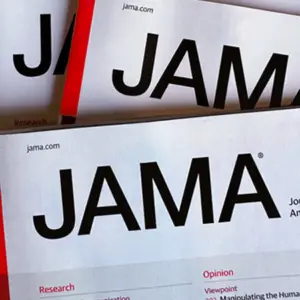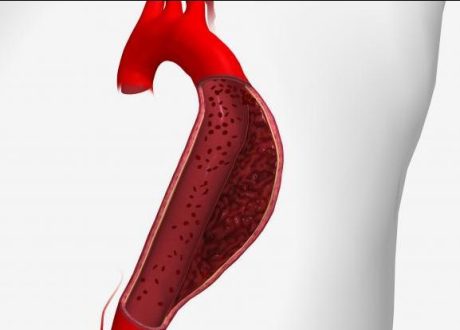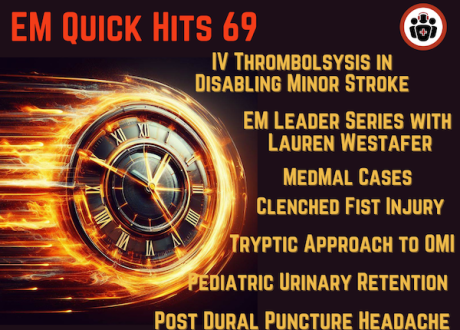 Xianfeng┬аDu,┬аMD1,2;┬аHuimin┬аChu,┬аMD1,2;┬аBing┬аYang,┬аMD3;┬аet alJingquan┬аZhong,┬аMD4;┬аZhongbao┬аRuan,┬аMD5;┬аQi┬аChen,┬аMD6;┬аBing┬аLeng,┬аMD7;┬аSiming┬аTao,┬аMD8;┬аHengli┬аLai,┬аMD9;┬аJianqiu┬аLiang,┬аMD10;┬аRuiqin┬аXie,┬аMD11;┬аPing┬аYe,┬аMD12;┬аXianhui┬аZhou,┬аMD13;┬аYaodong┬аLi,┬аMD13;┬аJianping┬аLi,┬аMD14;┬аYujie┬аZhao,┬аMD15;┬аCao┬аZou,┬аMD16;┬аHanze┬аSun,┬аMD17;┬аXiaorong┬аLi,┬аMD3;┬аBing┬аRong,┬аMD4;┬аGecai┬аChen,┬аMD5;┬аJinzhu┬аHu,┬аMD6;┬аJi┬аJia,┬аMD8;┬аYan┬аFang,┬аMD9;┬аZhangqing┬аXia,┬аMD10;┬аQian┬аLiu,┬аMD11;┬аTaomei┬аZuo,┬аMD12;┬аXuefeng┬аZhu,┬аMD14;┬аLiang┬аXu,┬аMD15;┬аShaohua┬аYang,┬аMD15;┬аChenxu┬аLuo,┬аMD1,2;┬аCaijie┬аShen,┬аMD, PhD1,2;┬аMingjun┬аFeng,┬аMD1,2;┬аYongxing┬аJiang,┬аMD1,2;┬аGuohua┬аFu,┬аMD1,2;┬аBinhao┬аWang,┬аMD1,2;┬аXinzhi┬аYu,┬аMD1,2;┬аXiaomin┬аChen,┬аMD1,2;┬аfor the COMBINATION Trial Investigators
Xianfeng┬аDu,┬аMD1,2;┬аHuimin┬аChu,┬аMD1,2;┬аBing┬аYang,┬аMD3;┬аet alJingquan┬аZhong,┬аMD4;┬аZhongbao┬аRuan,┬аMD5;┬аQi┬аChen,┬аMD6;┬аBing┬аLeng,┬аMD7;┬аSiming┬аTao,┬аMD8;┬аHengli┬аLai,┬аMD9;┬аJianqiu┬аLiang,┬аMD10;┬аRuiqin┬аXie,┬аMD11;┬аPing┬аYe,┬аMD12;┬аXianhui┬аZhou,┬аMD13;┬аYaodong┬аLi,┬аMD13;┬аJianping┬аLi,┬аMD14;┬аYujie┬аZhao,┬аMD15;┬аCao┬аZou,┬аMD16;┬аHanze┬аSun,┬аMD17;┬аXiaorong┬аLi,┬аMD3;┬аBing┬аRong,┬аMD4;┬аGecai┬аChen,┬аMD5;┬аJinzhu┬аHu,┬аMD6;┬аJi┬аJia,┬аMD8;┬аYan┬аFang,┬аMD9;┬аZhangqing┬аXia,┬аMD10;┬аQian┬аLiu,┬аMD11;┬аTaomei┬аZuo,┬аMD12;┬аXuefeng┬аZhu,┬аMD14;┬аLiang┬аXu,┬аMD15;┬аShaohua┬аYang,┬аMD15;┬аChenxu┬аLuo,┬аMD1,2;┬аCaijie┬аShen,┬аMD, PhD1,2;┬аMingjun┬аFeng,┬аMD1,2;┬аYongxing┬аJiang,┬аMD1,2;┬аGuohua┬аFu,┬аMD1,2;┬аBinhao┬аWang,┬аMD1,2;┬аXinzhi┬аYu,┬аMD1,2;┬аXiaomin┬аChen,┬аMD1,2;┬аfor the COMBINATION Trial InvestigatorsFindings┬а┬аIn this randomized clinical trial of 202 patients with AF undergoing a combined procedure, an occlusion-first approach resulted in greater freedom from the primary end point (composite of thromboembolic events including stroke or transient ischemic attack, device-related thrombus, clinically relevant bleeding, and cardiovascular rehospitalization or death) and long-term atrial arrhythmias.
Meaning┬а┬аThese findings suggest that an occlusion-first approach should be recommended for patients with AF undergoing a combined procedure with plug-like device implantation.
Importance┬а┬аThe optimal strategy of combining left atrial appendage occlusion (LAAO) with catheter ablation (CA) in patients with atrial fibrillation (AF) during a single procedure remains unclear.
Objective┬а┬аTo determine the effects of ablation-first vs occlusion-first strategies on long-term clinical outcomes among patients with atrial fibrillation undergoing a combined LAAO and CA procedure.
Design, Setting, and Participants┬а┬аThe prospective, multicenter COMBINATION randomized clinical trial was conducted in 14 high-volume centers in China. Enrollment of patients with nonvalvular AF referred for the combined procedure began on July 24, 2020, and concluded on January 20, 2022.
Interventions┬а┬аPatients were randomly assigned to either the ablation-first group or the occlusion-first group. Outcomes of LAAO using an occlusion device and CA using a contact forceРђЊsensing catheter following different combination strategies during long-term follow-up were evaluated.
Main Outcomes and Measures┬а┬аThe primary end point was a composite of thromboembolic events including stroke or transient ischemic attack, device-related thrombus (DRT), clinically relevant bleeding, and cardiovascular rehospitalization or death. Freedom from AF or atrial tachyarrhythmia (ATA) after a single procedure without antiarrhythmic drugs, at both 1 year and long-term follow-up, was also evaluated.
Results┬а┬аOf the 202 patients enrolled, 194 (96.0%) completed the trial (97 in the ablation-first group and 97 in the occlusion-first group). The mean (SD) age of the cohort was 67.3РђЅ(9.2) years, and 110 patients (56.7%) were male. All procedures achieved acute successful LAAO and restoration of sinus rhythm, with similar incidences of periprocedural complications. Compared with the ablation-first group, the occlusion-first group exhibited significantly higher event-free survival of the primary end point (83.5% vs 71.1%; hazard ratio [HR], 0.53 [95% CI, 0.29-0.95]; log-rank┬аPРђЅ=РђЅ.04) during the median 2.5 (IQR, 2.3-2.8) years of follow-up. Subgroup analysis indicated that male patients and those with higher CHA2DS2-VASc scores (a composite of factors associated with stroke risk; higher scores indicate higher risk) were at lower risk of thromboembolic events. Rates of long-term freedom from AF (77.3% vs 63.5%; HR, 0.58 [95% CI, 0.34-0.97]; log-rank┬аPРђЅ=РђЅ.04) and from ATA (70.1% vs 55.7%; HR, 0.62 [95% CI, 0.39-0.99]; log-rank┬аPРђЅ=РђЅ.04) were higher in the occlusion-first group vs the ablation-first group. Additionally, a higher incidence of chronic peridevice leak (15 [15.5%] vs 5 [5.2%];┬аPРђЅ=РђЅ.03) and DRT (8 [8.2%] vs 1 [1.0%];┬аPРђЅ=РђЅ.04) was observed in the ablation-first group vs the occlusion-first group.
Conclusions and Relevance┬а┬аIn this randomized clinical trial, the occlusion-first approach was superior due to its higher event-free survival of the primary end point and long-term freedom from ATA. These findings suggest that the occlusion-first approach should be recommended for combined procedures with plug-like device implantation.











